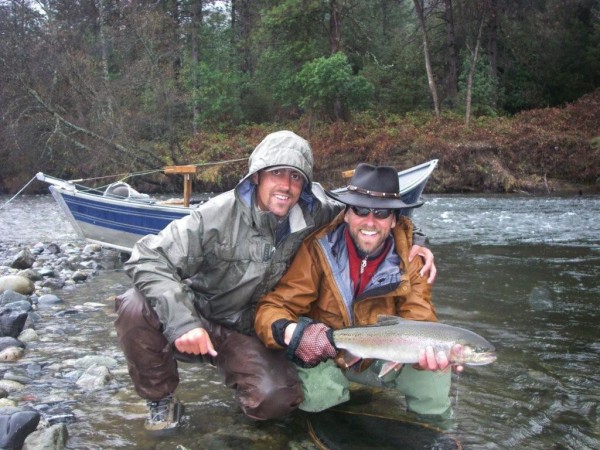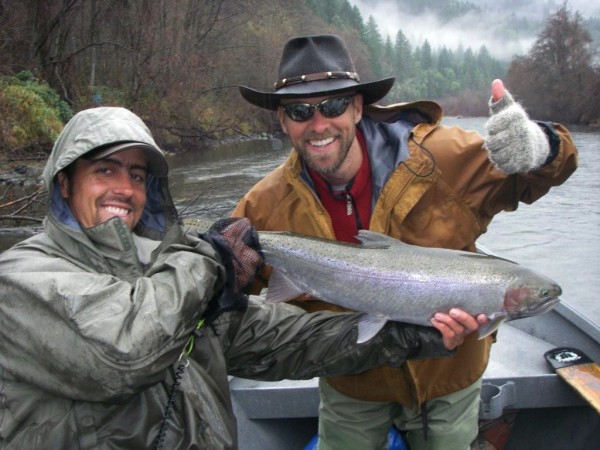The Trinity River is the longest tributary of the Klamath River, approximately 165 miles long, in northwestern California in the United States. It drains an area of the Coast Range, including the southern Klamath Mountains, northwest of the Sacramneto Valley. Considered especially scenic along most of its course it flows swiftly through tight canyons and mountain meadows. The river has been the scene of gold mining, including large scale hydraulic mining, since the days of the California Gold Rush. The river’s swift current make it a popular destination for whitewater rafting and kayaking. The creation of the Central Valley Project in the 1960s and the construction of Trinity Dam and Lewiston Dam diverted most of the Trinity’s water to the Sacramento Valley but a minimum annual flow has since been established. The river is also known for its runs of Salmon and Steelhead maintained in part by hatcheries but no worries there are ample wild fish to be had. The king salmon enter the river in mid-July and are there generally through October before fading out in early November. The steelhead arrive in October and typically are in the river through March. In 1981 the United States Congress designated the entire river downstream from the Lewiston Dam to its mouth on the Klamath, as well as portions of the river’s tributaries, as the Trinity Wild and Scenic River.
Its reputation as one of the most productive Steelhead rivers on the west cost is definitely true. Multiple fish days are a regular occurrence with the average size running 5-8 lbs.. The 40 miles of river stretching from Lewiston Dam down to the confluence with the North Fork offers anglers access to drift boat fishing in a beautiful setting as it courses through dense forest and canyons filled with ideal Steelhead holding water. Two techniques are popular here in seeking out these elusive beast, either nymphing under an indicator or the more traditional method of swinging flies. Early season is best for swinging, usually September-November, when water temperatures are warmer but nymphing is popular through March. There is also a population and opportunity for German Browns in the system. Most of the trips are near the town of Weaverville which offers many accommodation and dinning opportunities. The nearby city of Redding has a convenient airport for flights in and out of the area and Wild Waters Fly Fishing is more than happy to assist you with any arrangements needed.



Follow Us!